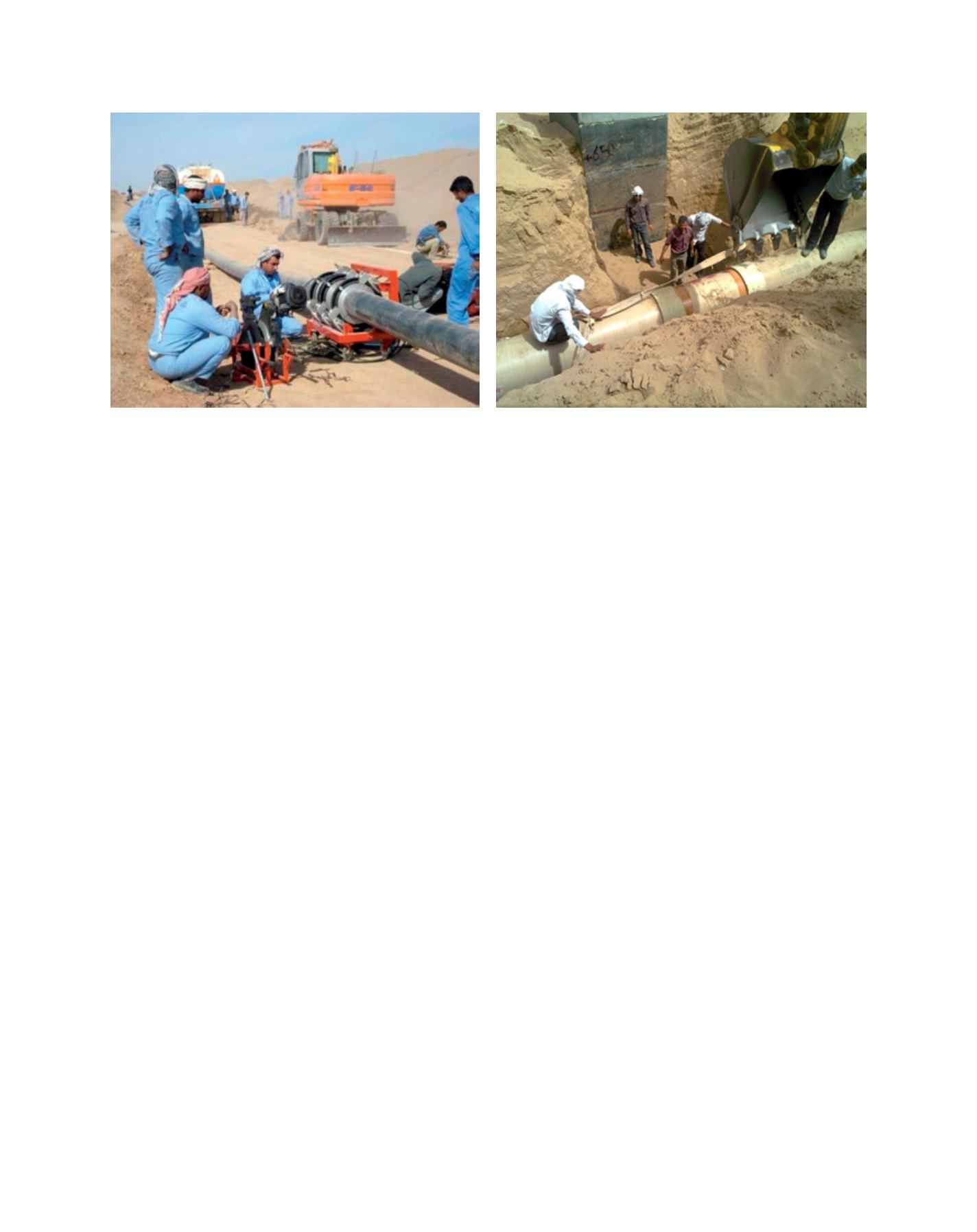

[
] 19
ment and investments in infrastructure with innovation
and advanced technologies which are socially, economi-
cally and financially viable.
IDB is directly involved in natural resources manage-
ment with integrated rural development; water resources
management and environmental protection; and agriculture
and food security team members. IDB strengthens member
countries’ capacities to better respond to environmental
challenges in current climate constraints. At the same time,
it assists member countries in dealing with river basin
(transboundary) water resources management issues at
national and regional levels. IDB strives to promote sustain-
able natural resources management, increase agricultural
productivity, enhance capacity development, promote
inclusiveness and equity, encourage rural development,
and facilitate farmers’ access to agricultural technologies
and support services.
Improving water use efficiency will require accurate
measurement of water supplied to farmers’ fields. However,
irrigation water application is not measured due to a lack of
simple measuring devices. Also, farmers do not have an incen-
tive to save irrigation water and have insufficient knowledge
about the negative impacts of over-irrigation. These problems
have been accumulating for more than half a century. They
were insufficiently studied at the initial stages, and the effects
of many technical solutions were not as obvious at the outset
as they are today. Now it is necessary to find feasible ways out
of this difficult situation.
Surface and subsurface drainage are required in arid
irrigated agriculture to ensure crop development and to
manage soil salinity. Surface drainage from furrow irriga-
tion is often discharged into drainage ditches and lost for
future use on the farm. Subsurface drainage is discharged
into large open drains to be disposed of later in surface water
bodies. Improving irrigation management will reduce the
total volume of drainage water being discharged and provide
additional water supply for irrigation.
During the past decade technologies in irrigation have
improved tremendously and the modernization of irrigation
methods at the farm level has opened many opportuni-
ties for farmers.
3
However, in order to arrive at this stage,
farmers face many difficulties. Improvement of irrigation
methods includes converting from a low-efficiency irriga-
tion system (such as furrow irrigation) to a high-efficiency
system such as sprinkler, drip and micro-irrigation. As
mentioned above, over the past decade the countries
located in arid regions that face water scarcity have already
made a considerable investment to assist farmers to convert
from conventional irrigation practices to high-efficiency
sprinkler, drip and micro-irrigation systems.
Dasht-e-Abbas irrigation scheme
The development objective of the Dasht-e-Abbas irrigation
scheme was to improve food security and alleviate poverty by
increasing agricultural production and productivity through
the development of about 32,750 ha of irrigated land. The
project contributed to increasing income and living standards
of the rural population of the region by generating employ-
ment for about 6,500 people in the agriculture, fish farming
and animal husbandry sectors.
The Dasht-e-Abbas irrigation scheme is located in
the South-Western province of Ilam, which includes the
Doyraj River catchment area. The newly developed scheme
carries water through a network of mains and distribu-
tion pipelines up to on-farm level. In the on-farm plots,
advanced irrigation technologies such as pressurized
sprinkler and drip irrigation are introduced. The project
achievements include:
• a 32,750 ha irrigated area developed for pressurized
irrigation, including 7,210 ha by drip irrigation and
25,540 ha by sprinkler irrigation where water efficiency
increased from 67 per cent to 92 per cent
• conversion of a 270 km main water delivery canal to a
pipeline system, increasing water efficiency from 74 per
cent to 98 per cent
• 88 km of primary/secondary drainage channels put in
place to drain field plots towards natural flood ways and
on to the Doyraj river.
The Dasht e Abbas irrigation scheme carries water to farms through a network of mains and distribution pipelines
Images: IDB
L
iving
L
and
















